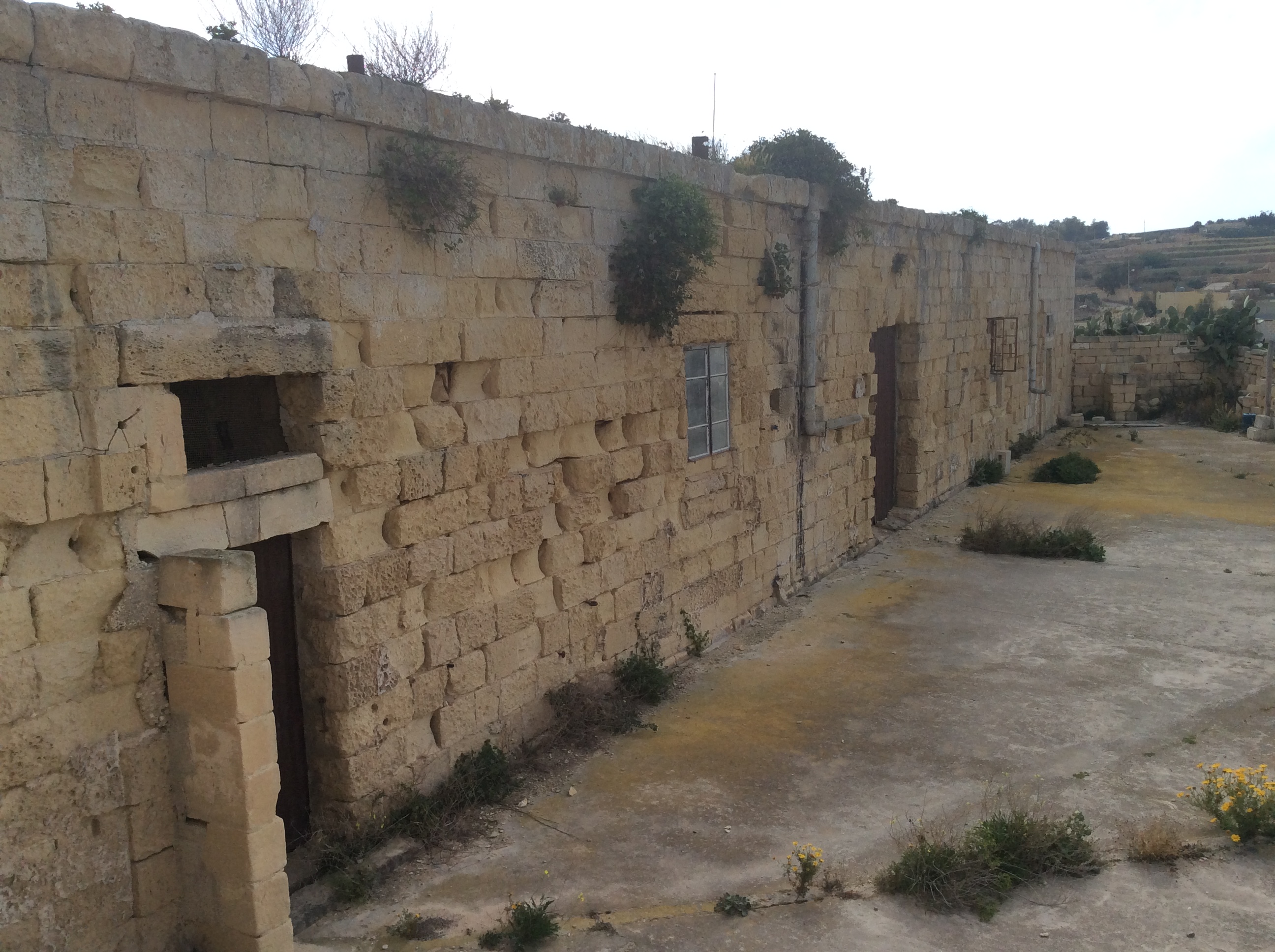|
Riħama Battery
Riħama Battery () is an artillery battery in Marsaskala, Malta. It was built by the Knights Hospitaller, Order of Saint John in 1714–1716 as one of a series of coastal fortifications around the coasts of the Maltese Islands. The battery still exists, although it is in a dilapidated state with part of it having collapsed. Riħama Battery is also known as Ducluseaux Battery (), Tal-Franċiż Battery (, literally "Frenchman's Battery") or Tan-Naz Battery (). History Riħama Battery was built in 1714–1716 as part of the first building programme of coastal batteries in Malta. It defended St. Thomas Bay along with the now-demolished Maħsel Battery on the opposite side of the bay, and Saint Thomas Tower, St. Thomas Tower and Battery commanding the headland to the north of the bay. The battery was also known as Ducluseaux Battery, possibly after the French knight Ducluseaux de Handessus. It cost 1179.11.19.2 scudi to build. Riħama Battery consisted of a pentagonal gun platform. ... [...More Info...] [...Related Items...] OR: [Wikipedia] [Google] [Baidu] |
Marsaskala
Marsaskala, sometimes written as Marsascala is a seaside town in the Southern Region, Malta, Southern Region of Malta. Originally a fishing village, it has grown into a tourist destination and a permanent hometown for an ever-growing population. The parish church, built in 1953, is dedicated to Saint Anne and Marsaskala's feast is celebrated at the end of July. Name and etymology The name of the town is also written as Marsascala in old ortography, and often abbreviated as M'Skala. It is a composite name derived from Arabic. ''Marsa'' is the common word for harbour (also found in Marsa, Malta, Marsa, Marsaxlokk, Marsamxett). ''Skala'' is of harder interpretation, most likely derived from ''Sqalli'' (Sicilian), possibly with reference to a community of fishermen from the island, which is only away from Malta. Marsaskala is also known as Wied il-Għajn by the Maltese, as the bay and the old small village are flanked by two valleys, through which a spring of fresh water used ... [...More Info...] [...Related Items...] OR: [Wikipedia] [Google] [Baidu] |
Marsascala Battery
Marsaskala, sometimes written as Marsascala is a seaside town in the Southern Region of Malta. Originally a fishing village, it has grown into a tourist destination and a permanent hometown for an ever-growing population. The parish church, built in 1953, is dedicated to Saint Anne and Marsaskala's feast is celebrated at the end of July. Name and etymology The name of the town is also written as Marsascala in old ortography, and often abbreviated as M'Skala. It is a composite name derived from Arabic. ''Marsa'' is the common word for harbour (also found in Marsa, Marsaxlokk, Marsamxett). ''Skala'' is of harder interpretation, most likely derived from ''Sqalli'' (Sicilian), possibly with reference to a community of fishermen from the island, which is only away from Malta. Marsaskala is also known as Wied il-Għajn by the Maltese, as the bay and the old small village are flanked by two valleys, through which a spring of fresh water used to flow down into the innermost bay ... [...More Info...] [...Related Items...] OR: [Wikipedia] [Google] [Baidu] |
18th-century Fortifications
The 18th century lasted from 1 January 1701 (represented by the Roman numerals MDCCI) to 31 December 1800 (MDCCC). During the 18th century, elements of Enlightenment thinking culminated in the Atlantic Revolutions. Revolutions began to challenge the legitimacy of monarchical and aristocratic power structures. The Industrial Revolution began mid-century, leading to radical changes in human society and the environment. The European colonization of the Americas and other parts of the world intensified and associated mass migrations of people grew in size as part of the Age of Sail. During the century, slave trading expanded across the shores of the Atlantic Ocean, while declining in Russia and China. Western historians have occasionally defined the 18th century otherwise for the purposes of their work. For example, the "short" 18th century may be defined as 1715–1789, denoting the period of time between the death of Louis XIV of France and the start of the French Revolut ... [...More Info...] [...Related Items...] OR: [Wikipedia] [Google] [Baidu] |
National Inventory Of The Cultural Property Of The Maltese Islands
The National Inventory of the Cultural Property of the Maltese Islands (NICPMI) is a heritage register listing the cultural property of Malta. The inventory includes properties such as archaeological sites, fortifications, religious buildings, monuments and other buildings. The NICPMI is under the responsibility of the Superintendence for Cultural Heritage (SCH), which was founded in 2002 to replace the Antiquities Act. The NICPMI was established on 16 December 2011. According to article 7(5)(a) of the Cultural Heritage Act, 2002: (5) It shall be the function of the Superintendence: :(a) to establish, update, manage and, where appropriate, publish, or to ensure the compilation of, a national inventory of cultural property belonging: ::(i) to the State or State institutions, ::(ii) to the Catholic Church and to other religious denominations, ::(iii) to Foundations established in these islands, ::(iv) to physical and juridical persons when the cultural property has been made acces ... [...More Info...] [...Related Items...] OR: [Wikipedia] [Google] [Baidu] |
Military Installations Closed In The 1830s
A military, also known collectively as armed forces, is a heavily armed, highly organized force primarily intended for warfare. Militaries are typically authorized and maintained by a sovereign state, with their members identifiable by a distinct military uniform. They may consist of one or more military branches such as an army, navy, air force, space force, marines, or coast guard. The main task of a military is usually defined as defence of their state and its interests against external armed threats. In broad usage, the terms "armed forces" and "military" are often synonymous, although in technical usage a distinction is sometimes made in which a country's armed forces may include other paramilitary forces such as armed police. Beyond warfare, the military may be employed in additional sanctioned and non-sanctioned functions within the state, including internal security threats, crowd control, promotion of political agendas, emergency services and reconstruction, prot ... [...More Info...] [...Related Items...] OR: [Wikipedia] [Google] [Baidu] |



